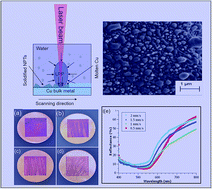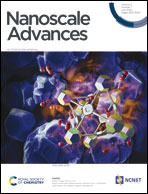Comparative study of femtosecond laser-induced structural colorization in water and air
Abstract
The study of femtosecond laser structural coloring has recently attracted a great amount of research interest. These studies, however, have only been carried out in air. At the same time, laser ablation has also been actively studied in liquids as they provide a unique environment for material processing. However, surprisingly, structural coloring has never been performed in liquids. In this work, we perform the first study of metal structural coloring in liquid and compare the results to metal structural coloring in air. Colors created in liquid are formed by nanoparticle-induced plasmonic absorption and result in a range of colors transitioning from purple to orange. Surface structures formed in liquid are less hierarchical and more uniform than those formed in air, producing a surface with a much higher reflectance due to reduced light trapping, resulting in a more vibrant color. However, colorization formed in water suffers from less uniform colorization due to turbulence at the air–water and water-target interfaces, resulting in slight changes to the laser beam's focus during processing. Finally, finite-difference-time-domain simulation based on the measured surface structures is used to understand the role of plasmonic resonance in colorization.



 Please wait while we load your content...
Please wait while we load your content...